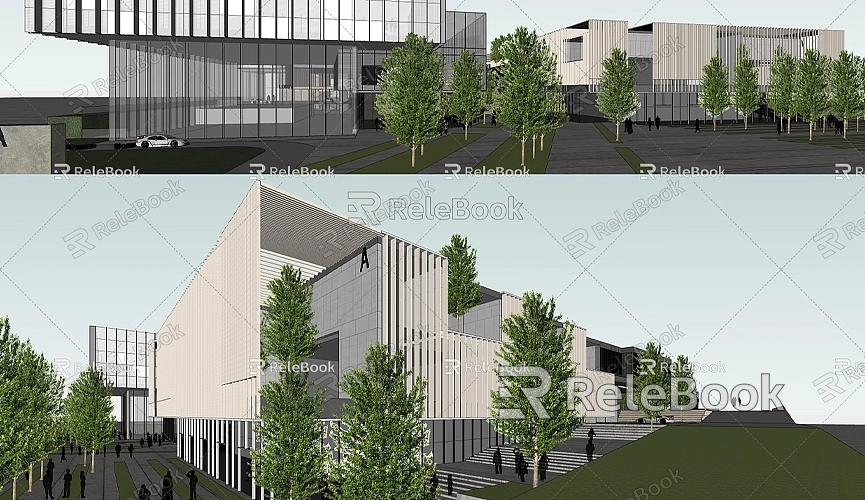How to locate sketchup model in google earth
In the fields of architectural design and 3D modeling, SketchUp is undoubtedly one of the most widely used tools. With its user-friendly interface and powerful features, it has attracted a large following of architects, designers, and enthusiasts. Whether for designing small residential buildings or large-scale urban planning, SketchUp offers great assistance. However, simply creating a model in SketchUp does not mean the project is complete. Displaying these models in Google Earth allows designers to visually see how buildings relate to their surrounding environments, and helps clients better understand the design intent. Locating your SketchUp model in Google Earth and viewing it within a virtual environment has become a crucial part of modern design workflows. This article will explore how to correctly locate a SketchUp model in Google Earth, providing useful tips and steps for a smooth process.

Why Locate SketchUp Models in Google Earth?
Before learning how to place a SketchUp model in Google Earth, it is important to understand the significance of this process. Google Earth offers satellite imagery and mapping data of the entire globe. By placing a 3D model into Google Earth’s real-world coordinates, designers and clients gain immense benefits. Through virtual reality technology, designers can see how their buildings appear in their actual geographic locations, helping to assess how well the architectural design fits with the environment.
For urban planning projects, architectural designs, or landscape designs, combining 3D models with Google Earth is especially important. This approach allows users to experience the interaction between buildings or landscapes and their surroundings firsthand. It provides an intuitive visual representation and can help identify potential design issues before construction begins.
Preparation: How to Ensure Your SketchUp Model Meets Google Earth Requirements
Before importing a SketchUp model into Google Earth, you need to make sure the model’s scale, location, and format meet Google Earth’s requirements. Google Earth has certain standards for loading 3D models, and only models that meet these standards will be accurately positioned and displayed correctly.
First, ensure the geographic location of the SketchUp model is set correctly. To place your model precisely in Google Earth, SketchUp has a built-in "Geo-location" feature. This allows users to associate the model with real-world geographic coordinates, ensuring that the exported model is correctly positioned in the real world. Setting the correct geographic location for the model is essential for the subsequent steps.
Second, the model’s scale is crucial. Google Earth’s 3D view requires buildings to be modeled at actual scale, so the model’s size and its relationship to the ground and surrounding environment are properly displayed. If the scale is incorrect, the model may appear distorted or out of proportion in Google Earth. Thus, checking and ensuring the model’s scale is accurate is a vital step.

How to Export a SketchUp Model in Google Earth Format
Once you’ve verified the model’s geographic location and scale, the next step is exporting the model. SketchUp allows you to export your model as a KML file format, which is supported by Google Earth. This process is relatively simple and can be done by following these steps:
1. Open your completed 3D model in SketchUp.
2. In the "File" menu, select "Export."
3. In the export window, choose "Google Earth" as the file type, then specify a file save location.
4. SketchUp will automatically convert the model into a KML file and save it to your chosen directory.
Before exporting, users can adjust the display settings for the model, such as whether to include textures and materials, or whether to generate screenshots from different viewpoints. These settings help ensure the model’s output matches your expectations. It’s important to note that if your model contains complex materials, textures, or dynamic elements, you should ensure these resources are correctly converted and recognized during the export process.
Importing Your SketchUp Model into Google Earth
After exporting your SketchUp model as a KML file, the next step is to import it into Google Earth. Open Google Earth, and in the "File" menu, select "Open." Locate the KML file you just exported and open it. Google Earth will automatically load the model and place it at the correct geographical location.
As the model loads, Google Earth will use the geographic data from the KML file to position it at the correct coordinates. If the location settings are correct, you’ll see the model displayed at the designated spot on Earth. If you need to make any adjustments to the model’s location, Google Earth offers various editing tools that allow you to manually tweak the model’s position, rotation, and scale to ensure it appears as expected.
Adjusting the Model’s Display Settings
After importing the model, it may appear correctly, but for optimal visual effect, you may need to make minor adjustments. Google Earth allows users to customize the 3D model’s display settings, including adjusting lighting, shadows, and texture details.
For instance, adding more lighting or adjusting the direction of shadows can make the model look more realistic. Google Earth’s 3D environment has a powerful lighting system that simulates sunlight from different angles, allowing you to see how the model looks under various lighting conditions.
If your model uses a lot of detail and textures, it could potentially affect Google Earth’s performance when loading the model. To ensure smooth viewing, you can try simplifying the model’s complexity, optimizing its structure, or breaking the model into smaller parts for easier import. By optimizing the model, you can reduce performance bottlenecks and improve loading and rendering speed in Google Earth.
Using Textures and HDRI to Enhance the Effect
Another way to enhance the model’s appearance is by using high-quality 3D textures and HDRI (High Dynamic Range Imaging) technology. For designers seeking realistic visual effects, appropriate textures and HDRI images can greatly improve the overall quality of the scene. Textures add surface detail to the model, while HDRI improves lighting and reflection effects.
When creating models and virtual scenes, if you need access to a wide range of high-quality 3D textures and HDRI images, Relebook is an excellent resource. You can download high-quality 3D textures for free from [Relebook](https://textures.relebook.com/) to add more detail to your models. If you’re also looking for beautiful 3D models, visit [Relebook](https://3dmodels.relebook.com/), which offers a vast selection of premium 3D models to help you further enhance your designs.
By applying these high-quality textures and HDRI images to your SketchUp model, you can make it look even more realistic and detailed in Google Earth. These details not only improve the visual effect but also enhance the interaction between the model and the environment, adding depth and realism to the entire scene.
Conclusion
Locating a SketchUp model in Google Earth and positioning it accurately may seem straightforward, but it requires some careful steps and technical expertise. Ensuring the model’s geographic location is set correctly, the export format is appropriate, and the display settings are fine-tuned all play a crucial role in achieving the best presentation. By effectively using high-quality 3D textures and HDRI images, you can significantly improve the details and visual effects of your model, making it appear more realistic and refined.
With Google Earth as a platform, designers can not only present architectural designs but also better understand how their creations interact with the surrounding environment. We hope this guide helps you successfully import your SketchUp model into Google Earth and fully utilize this powerful tool to showcase your design ideas. If you need more high-quality 3D textures and HDRI for your models, Relebook offers a wealth of free resources to help you elevate your design quality and make your projects stand out.

